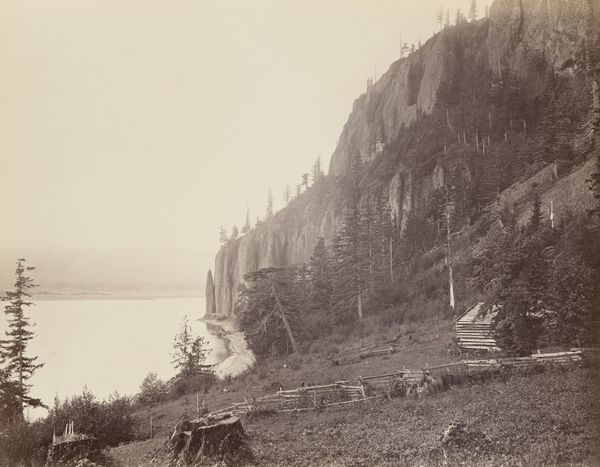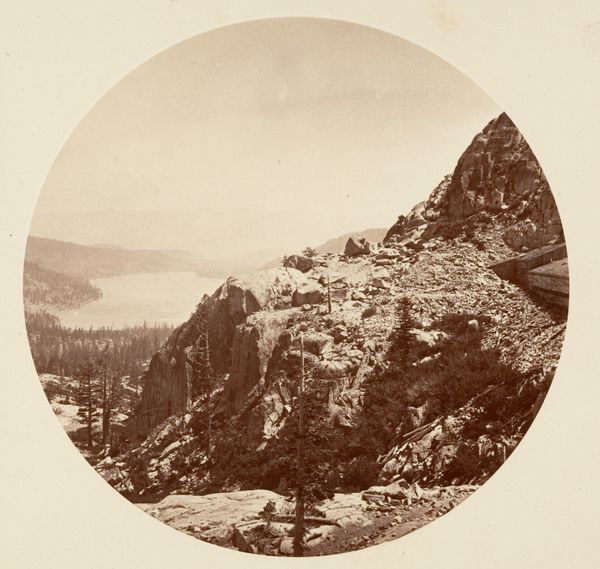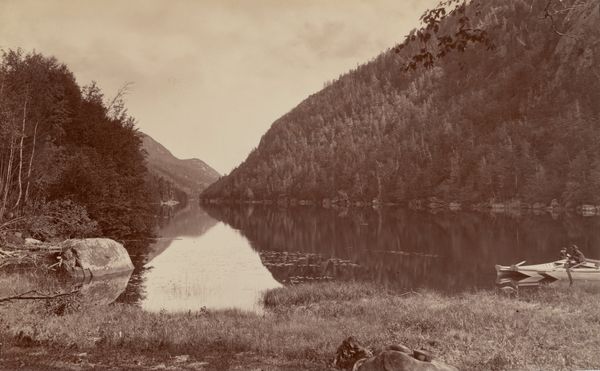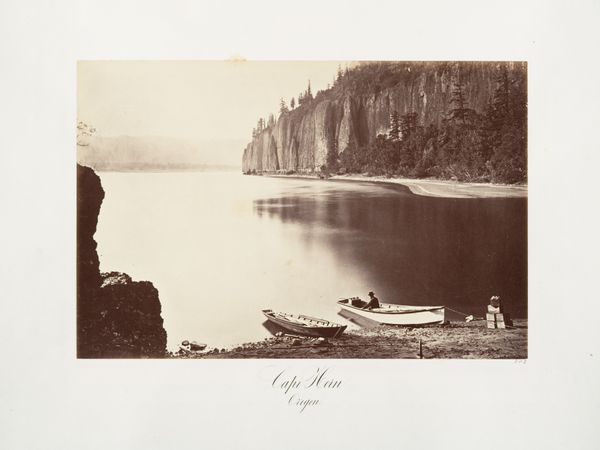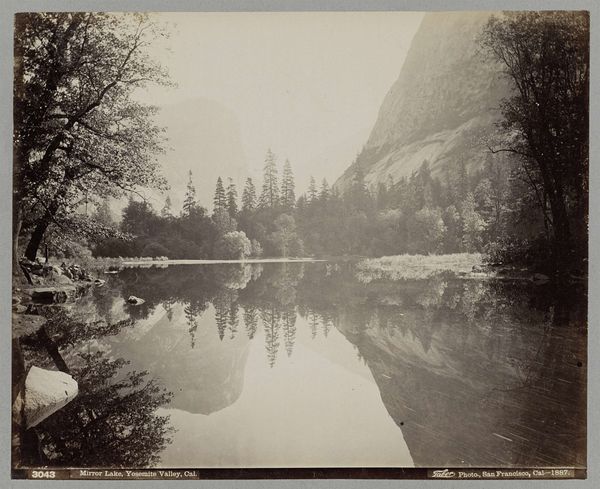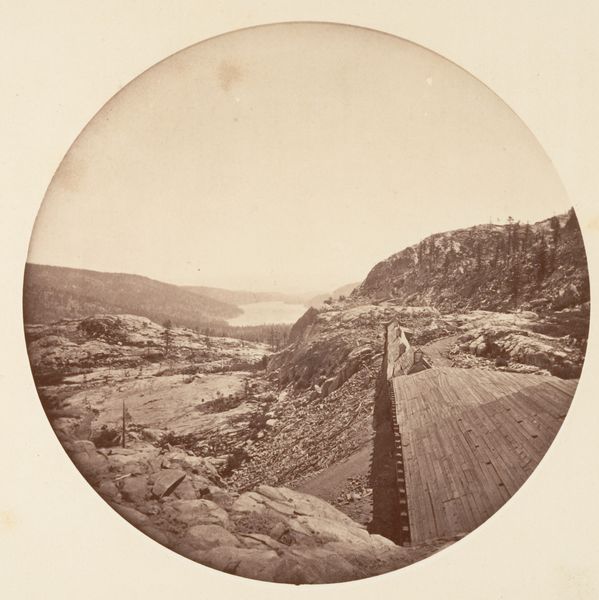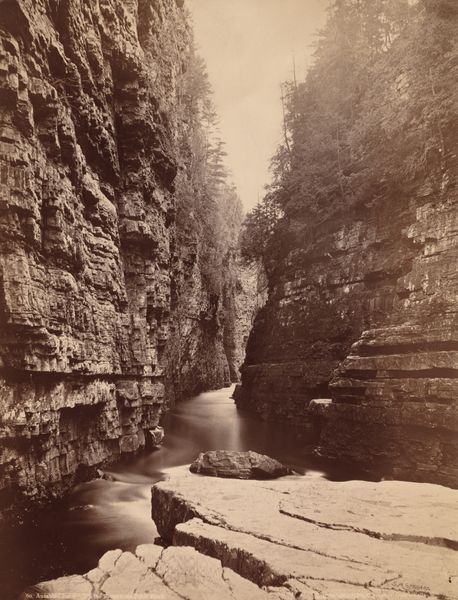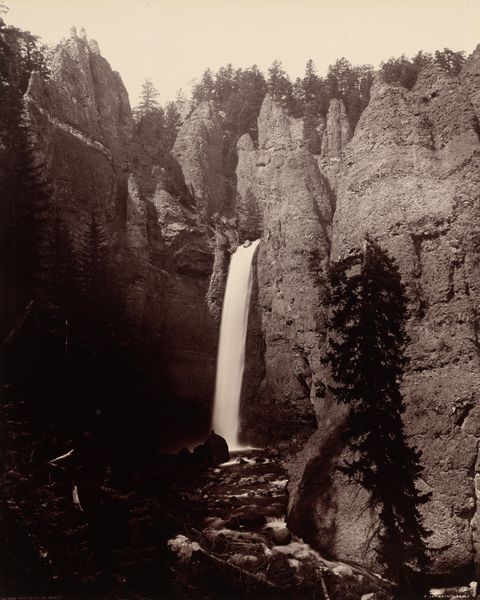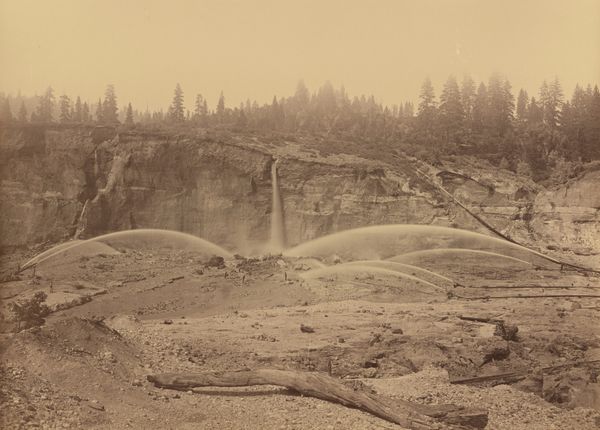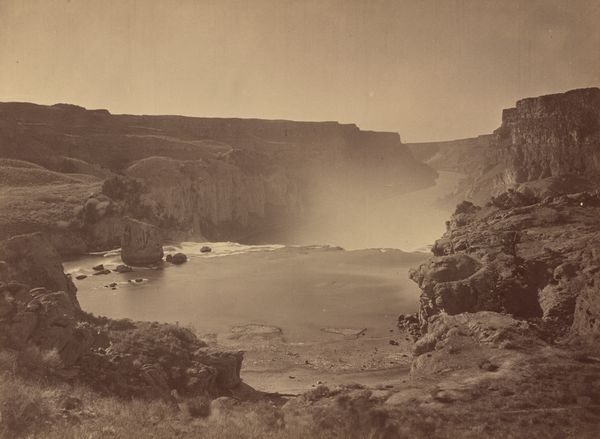
#
scenic
#
countryside
#
sunset
#
outdoor scenery
#
landscape photography
#
fog
#
sunrise
#
scenic spot
#
skyscape
#
shadow overcast
Dimensions: overall: 41.2 x 52.5 cm (16 1/4 x 20 11/16 in.)
Copyright: National Gallery of Art: CC0 1.0
Editor: We're looking at Carleton Watkins’ “Cape Horn, Columbia River,” taken in 1867. It’s a mammoth-plate photograph. There’s a stillness, a quiet grandeur to this landscape. The light is beautiful and dramatic but there’s a tiny human figure in a boat. What's going on in this piece? Curator: That figure is precisely the point. Watkins was deeply embedded in the project of westward expansion, especially the growth of industry and agriculture. Consider how the railroads used images like these to promote settlement, casting the Pacific Northwest as a place of both sublime natural beauty and untapped resources, ready for exploitation. Editor: So, this seemingly tranquil scene had a political agenda? Curator: Absolutely. How do you think the inclusion of boats affects your interpretation of this scene, versus a version that omits them? Think about the socio-economic aspects that Watkins seems to subtly highlight. Editor: The boats feel like…intrusion. This grand scene is about to be changed by humans, isn’t it? Like it's right before industrialization. Curator: Exactly. Watkins photographs natural beauty and emphasizes a kind of American optimism but, when viewed with our current understanding, this feels bittersweet. We now recognize the irreversible environmental changes linked to that era. These sublime landscapes were packaged to persuade an American population ready for expansion, all documented by the development of the photography industry itself. Editor: I see. The image itself became a tool. Thanks, this helps me understand that era so much better. Curator: And, now I wonder what a contemporary version would look like, knowing what we know now.
Comments
No comments
Be the first to comment and join the conversation on the ultimate creative platform.
